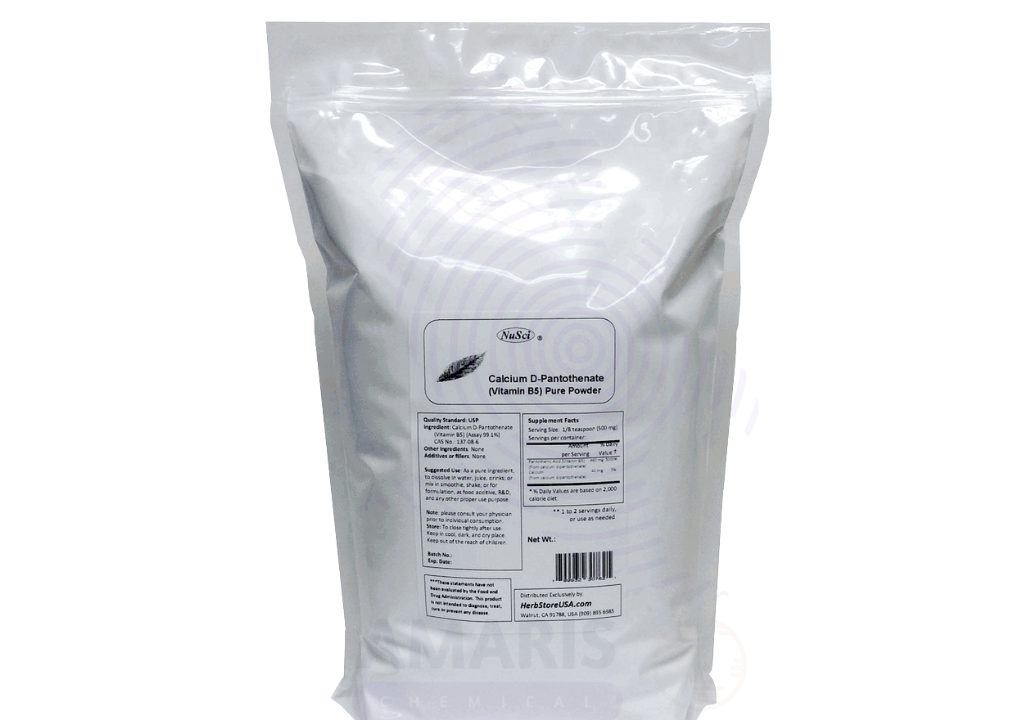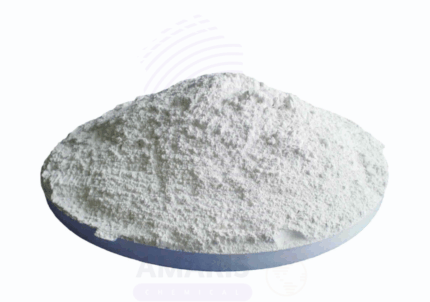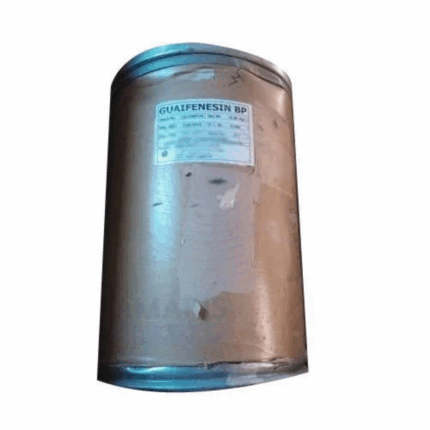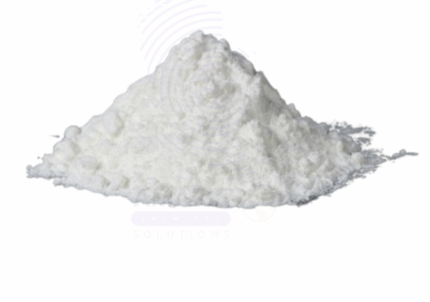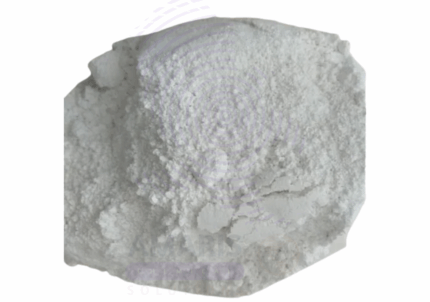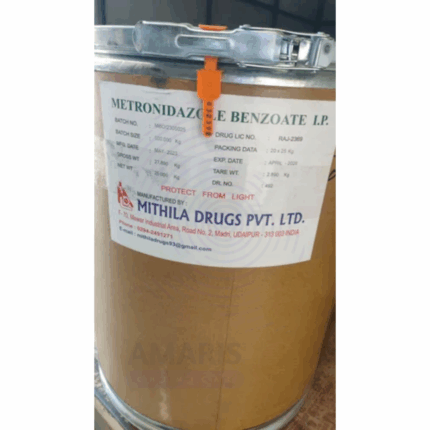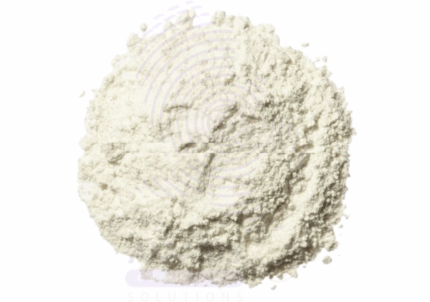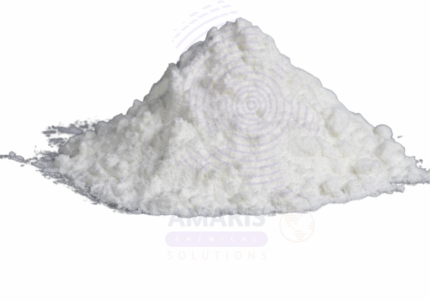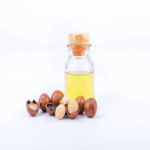
Vitamin B5 (d-pantothenate)
Vitamin B5 d-pantothenate, commonly referred to as D-Pantothenate, is the biologically active, water-soluble form of pantothenic acid. It is an essential nutrient involved in the synthesis of coenzyme A (CoA), critical for fatty acid metabolism and energy production. D-Pantothenate is used across pharmaceuticals, food, feed, cosmetics, and nutraceuticals due to its stability, bioavailability, and broad health benefits.
Vitamin B5 (d-pantothenate)
Primary Uses
- Pharmaceutical Industry
- Nutritional Supplement: Formulated in tablets, capsules, and injectables to treat or prevent pantothenic acid deficiency, fatigue, irritability, and digestive disorders.
- Wound Healing Support: Incorporated in treatments for skin disorders, burns, and post-surgical healing due to its tissue regeneration properties.
- Nutraceuticals & Dietary Supplements
- Energy Metabolism: Used in B-complex vitamins to aid in energy release from carbohydrates, fats, and proteins.
- Stress and Adrenal Support: Marketed in supplements targeting adrenal gland health and stress resilience.
- Food & Beverage Industry
- Fortification Agent: Added to processed foods (e.g., cereals, beverages, infant formulas) to improve nutritional value and prevent deficiencies in the general population.
Secondary Uses
- Cosmetics & Personal Care
- Skin Care: Used in creams, lotions, and ointments for its moisturizing, soothing, and anti-inflammatory effects.
- Hair Care: Found in shampoos, conditioners, and hair tonics to improve hair texture, strength, and manageability.
- Nail Products: Occasionally used in nail care formulas to strengthen brittle nails.
- Animal Nutrition
- Feed Additive: Added to livestock and poultry feed to promote growth, reproductive health, and immune system support.
- Pet Food Fortification: Included in pet supplements to support coat health, metabolism, and vitality.
- Veterinary Medicine
- Deficiency Treatment: Used to address metabolic disorders or deficiencies in animals, especially under stress or poor dietary conditions.
- Research & Development
- Metabolic Studies: Used in laboratory research to study CoA-related metabolic pathways and enzyme regulation.
- Biotechnological Applications: Occasionally used in microbial cultures to support bacterial or yeast growth.
1. Basic Identification Attributes
- Chemical Name (IUPAC): (R)-N-(2,4-Dihydroxy-3,3-dimethylbutanoyl)-β-alanine calcium salt (often as calcium D-pantothenate)
- Common/Trade Name: D-Pantothenate, Calcium D-Pantothenate, Vitamin B5
- CAS Number: 137-08-6 (for calcium D-pantothenate)
- HS Code: 2936.26.00
- Synonyms: Pantothenic acid calcium salt, Vitamin B5, Panthenol precursor
2. Physical & Chemical Properties
- Physical State: White, hygroscopic powder
- Color & Odor: White; odorless or faint characteristic odor
- Solubility: Soluble in water; slightly soluble in alcohol
- Melting Point: Decomposes above 190 °C
- Density: Approx. 1.2 g/cm³
- pH (1% solution): 6.8–8.0
3. Safety & Hazard Attributes
- GHS Classification: Not classified as hazardous
- Toxicity: Low toxicity; well-tolerated in humans and animals at recommended dosages
- Exposure Limits: No established occupational limits
4. Storage & Handling Attributes
- Storage Conditions: Store in a cool, dry place away from direct sunlight and moisture
- Container Type: Sealed, light-resistant packaging
- Shelf Life: 24 months under controlled storage
- Handling Precautions: Avoid dust generation; handle in a well-ventilated environment
5. Regulatory & Compliance Attributes
- Complies with: USP, BP, Ph. Eur. standards
- Manufacturing Standards: GMP-compliant production
- Food Use Approvals: Approved for use in food and beverage fortification
- Supplement Use: Permitted in nutritional supplements globally
- Animal Feed Compliance: Meets international standards for livestock and pet feed inclusion
6. Environmental & Health Impact
- Biodegradability: Readily biodegradable
- Ecotoxicity: Low environmental toxicity
- Bioaccumulation: Not bioaccumulative
Safety Handling Precautions
- PPE Required: Gloves and dust mask recommended
- Handling Guidelines: Use under dry conditions with local exhaust ventilation
- Storage Measures: Keep container tightly closed and protected from humidity
First Aid Measures
- Inhalation: Move to fresh air; seek medical attention if discomfort persists
- Skin Contact: Wash thoroughly with water and soap
- Eye Contact: Flush with clean water for at least 15 minutes; seek medical advice if irritation occurs
- Ingestion: Rinse mouth; consult a physician if large quantities are consumed
Firefighting Measures
- Fire Hazards: Non-flammable but may decompose on heating
- Extinguishing Media: Use dry chemical, CO₂, or water spray
- Hazardous Combustion Products: Carbon oxides and nitrogen compounds may be released during combustion
Related products
Diloxanide Furoate
Guaiphenesin BP
Lidocaine HCL BP
Mebendazole USP ( Micronized white)
Metronidazole Benzoate BP
Miconazole Nitrate BP
Miconazole Nitrate BP is a high-purity, pharmaceutical-grade antifungal agent conforming to British Pharmacopoeia (BP) specifications. It is widely used in the formulation of topical and oral pharmaceutical products for the treatment of fungal infections caused by dermatophytes and yeasts, including Candida species. Miconazole Nitrate functions by inhibiting the biosynthesis of ergosterol, a vital component of fungal cell membranes, leading to cell death.
This white to off-white crystalline powder is highly effective and exhibits broad-spectrum antifungal and some antibacterial activity. It is commonly utilized in creams, ointments, powders, and gel formulations.


 Preservatives(food)
Preservatives(food) Flavor Enhancers
Flavor Enhancers Acidulants
Acidulants Sweeteners
Sweeteners Antioxidants
Antioxidants Colorants(food)
Colorants(food) Nutraceutical Ingredients (food)
Nutraceutical Ingredients (food) Nutrient Supplements
Nutrient Supplements Emulsifiers
Emulsifiers
 Collectors
Collectors Dust Suppressants
Dust Suppressants Explosives and Blasting Agents
Explosives and Blasting Agents Flocculants and Coagulants
Flocculants and Coagulants Frothers
Frothers Leaching Agents
Leaching Agents pH Modifiers
pH Modifiers Precious Metal Extraction Agents
Precious Metal Extraction Agents
 Antioxidants(plastic)
Antioxidants(plastic) Colorants (Pigments, Dyes)
Colorants (Pigments, Dyes) Fillers and Reinforcements
Fillers and Reinforcements Flame Retardants
Flame Retardants Monomers
Monomers Plasticizers
Plasticizers Polymerization Initiators
Polymerization Initiators Stabilizers (UV, Heat)
Stabilizers (UV, Heat)
 Antifoaming Agents
Antifoaming Agents Chelating Agents
Chelating Agents Coagulants and Flocculants
Coagulants and Flocculants Corrosion Inhibitors
Corrosion Inhibitors Disinfectants and Biocides
Disinfectants and Biocides Oxidizing Agents
Oxidizing Agents pH Adjusters
pH Adjusters Scale Inhibitors( water)
Scale Inhibitors( water)
 Antioxidants(cosmetic)
Antioxidants(cosmetic) Emollients
Emollients Fragrances and Essential Oils
Fragrances and Essential Oils Humectants
Humectants Preservatives
Preservatives Surfactants(cosmetic)
Surfactants(cosmetic) Thickeners
Thickeners UV Filters
UV Filters
 Fertilizers
Fertilizers Soil Conditioners
Soil Conditioners Plant Growth Regulators
Plant Growth Regulators Animal Feed Additives
Animal Feed Additives Biostimulants
Biostimulants Pesticides (Herbicides, Insecticides, Fungicides)
Pesticides (Herbicides, Insecticides, Fungicides)
 Active Pharmaceutical Ingredients (APIs)
Active Pharmaceutical Ingredients (APIs) Excipients
Excipients Solvents(pharmaceutical)
Solvents(pharmaceutical) Antibiotics
Antibiotics Antiseptics and Disinfectants
Antiseptics and Disinfectants Vaccine Adjuvants
Vaccine Adjuvants Nutraceutical Ingredients (pharmaceutical)
Nutraceutical Ingredients (pharmaceutical) Analgesics & Antipyretics
Analgesics & Antipyretics
 Analytical Reagents
Analytical Reagents Solvents(lab)
Solvents(lab) Chromatography Chemicals
Chromatography Chemicals Spectroscopy Reagents
Spectroscopy Reagents microbiology-and-cell-culture-reagents
microbiology-and-cell-culture-reagents Molecular Biology Reagents
Molecular Biology Reagents Biochemical Reagents
Biochemical Reagents Inorganic and Organic Standards
Inorganic and Organic Standards Laboratory Safety Chemicals
Laboratory Safety Chemicals Specialty Laboratory Chemicals(Special Laboratory Equipment)
Specialty Laboratory Chemicals(Special Laboratory Equipment)
 Demulsifiers
Demulsifiers Hydraulic Fracturing Fluids
Hydraulic Fracturing Fluids Scale Inhibitors(oil)
Scale Inhibitors(oil) Surfactants(oil)
Surfactants(oil) Drilling Fluids
Drilling Fluids
 Dyes and Pigments
Dyes and Pigments Bleaching Agents
Bleaching Agents Softening Agents
Softening Agents Finishing Agents
Finishing Agents Antistatic Agents
Antistatic Agents
 Admixtures
Admixtures Waterproofing Agents
Waterproofing Agents Sealants and Adhesives
Sealants and Adhesives Curing Compounds
Curing Compounds Concrete Repair Chemicals
Concrete Repair Chemicals Anti-Corrosion Coatings
Anti-Corrosion Coatings
 Surfactants(cleaning)
Surfactants(cleaning) Builders
Builders Enzymes
Enzymes Solvents (Cleaning)
Solvents (Cleaning) Fragrances
Fragrances
 Electronic Chemicals
Electronic Chemicals Catalysts
Catalysts Lubricants
Lubricants Photographic Chemicals
Photographic Chemicals Refrigerants
Refrigerants Automotive chemicals
Automotive chemicals Pyrotechnic Chemicals
Pyrotechnic Chemicals
 Biodegradable Surfactants
Biodegradable Surfactants Bio-based Solvents
Bio-based Solvents Renewable Polymers
Renewable Polymers Carbon Capture Chemicals
Carbon Capture Chemicals Wastewater Treatment Chemicals
Wastewater Treatment Chemicals
 Pigments
Pigments Solvents(paint)
Solvents(paint) Specialty Coatings
Specialty Coatings Binders/Resins
Binders/Resins Additives
Additives Driers
Driers Anti-Corrosion Agents
Anti-Corrosion Agents Functional Coatings
Functional Coatings Application-Specific Coatings
Application-Specific Coatings
 Fresh Herbs
Fresh Herbs Ground Spices
Ground Spices Whole Spices
Whole Spices Spice Blends
Spice Blends Dried Herbs
Dried Herbs
 Leavening Agents
Leavening Agents Dough Conditioners
Dough Conditioners Flour Treatments
Flour Treatments Fat Replacers
Fat Replacers Decoratives
Decoratives Preservatives(baking)
Preservatives(baking)
 Plasticizers & Softeners
Plasticizers & Softeners Reinforcing Agents
Reinforcing Agents Adhesion Promoters
Adhesion Promoters Vulcanizing Agents
Vulcanizing Agents Antidegradants
Antidegradants Blowing Agents
Blowing Agents Fillers & Extenders
Fillers & Extenders Accelerators & Retarders
Accelerators & Retarders